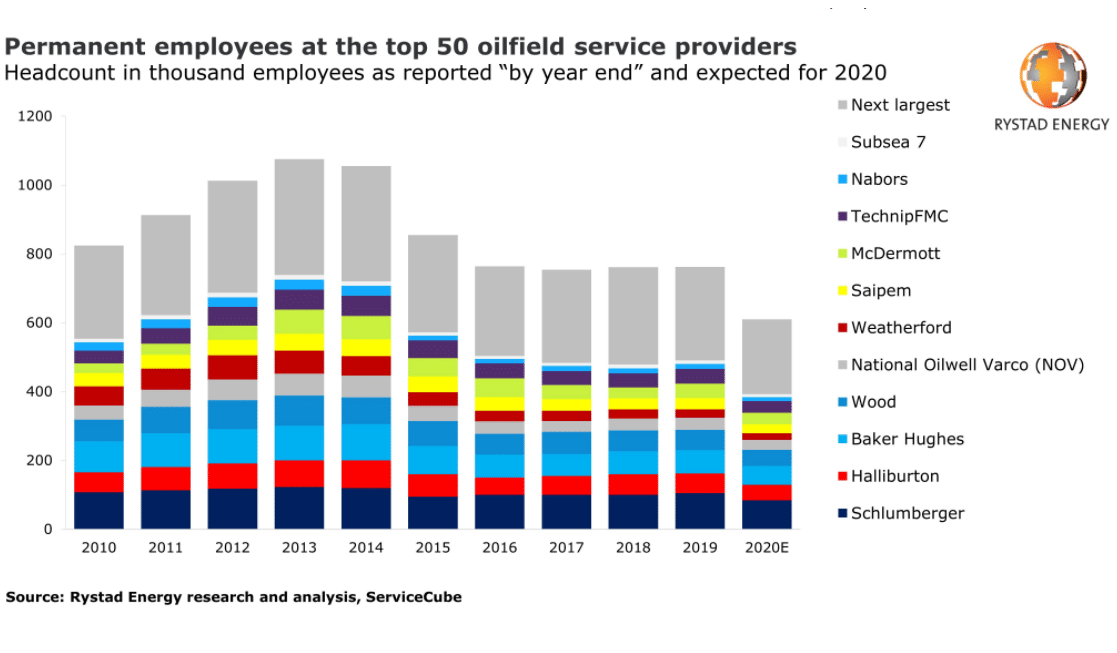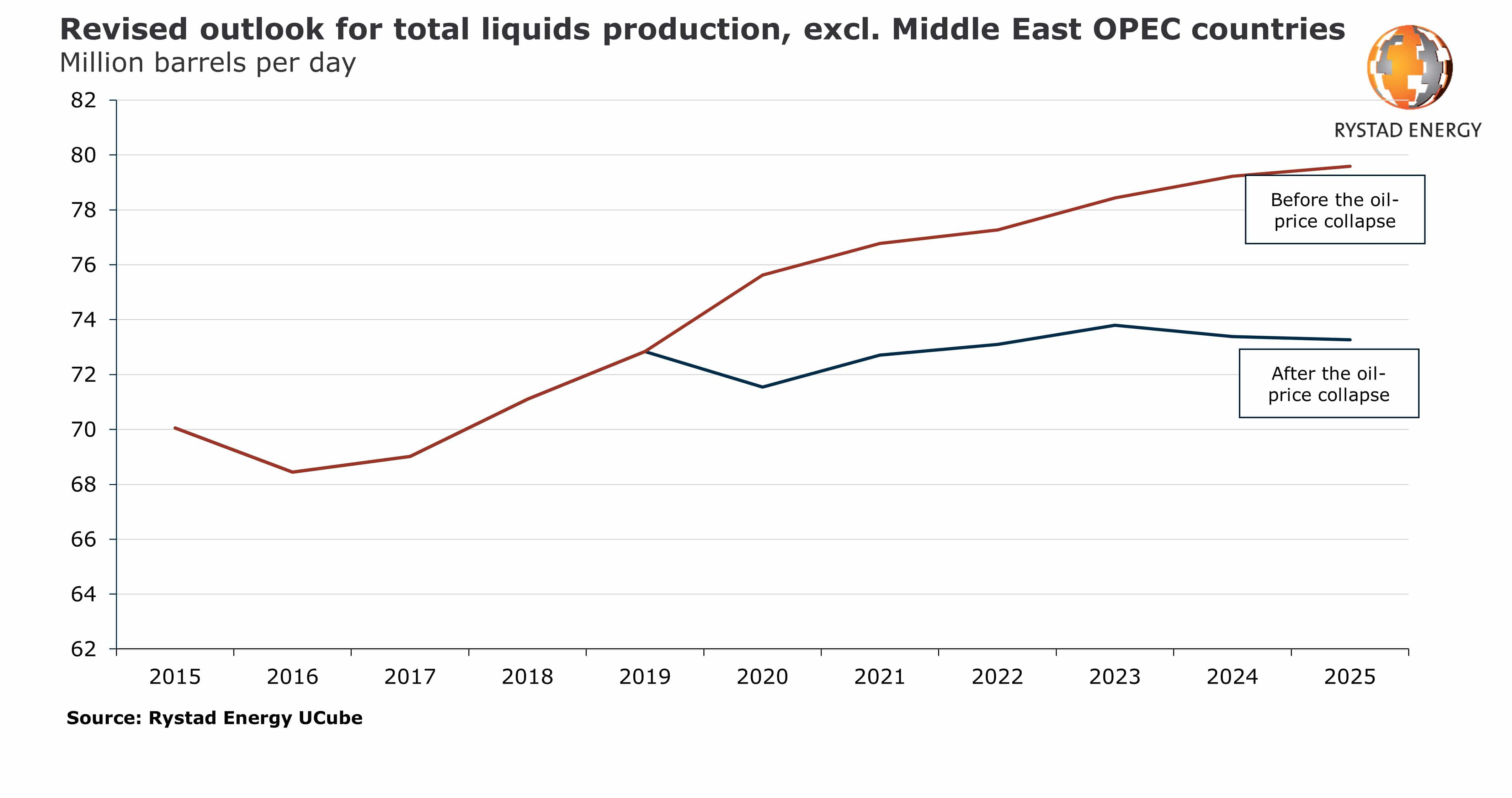For many working in the oil and gas sector, the results of the analysis published by Rystad Energy will probably not come as a surprise. Let’s have a closer look at the numbers.
Employees
Rystad Energy tracks the permanent employee count of the top service companies, including reported permanent employees at year-end. The analysis shows that the reduced staff levels in the Oilfield Service (OFS) industry seen in 2016, after the previous downturn, have mostly been maintained at just over 760,000 employees, keeping a major cost driver – investment in human capital – at steady low levels.
However, the downsizing expected this year is likely to result in the OFS industry experiencing the lowest total headcount in over a decade, which is estimated to amount to about 610,000 employees. This means a further 20% reduction of an already tight 2016-2019 workforce.
Revenue
With a lower-than-anticipated activity and delayed projects, the industry is forced to deploy cost-cutting measures. The Rystad Energy analysis of the top 50 oilfield service (OFS) firms also shows that the anticipated revenue per employee will decline towards the previous downturn’s level.
Within the analysis, Rystad calculates revenue per employee as a company’s total yearly revenue divided by the number of employees by year-end. Studying this parameter provides an understanding of how efficiently service companies are able to utilise their employees. This metric is applied as a weighted average basis for the top service companies, which earned a total of over $200 billion in 2019.

When Brent oil prices were above $100 a barrel, Rystad Energy sees that companies historically earned about $300,000 or more per employee. However, when prices fall, revenue per employee dip to as low as $250,000 per employee, as was seen in 2016. This year, Rystad Energy expects revenue per employee will fall again, diving to around $260,000 per employee from the stable levels seen in the past two years as revenues from the largest OFS companies plummet quicker than their respective headcounts do.
Revenue per employee is not likely to fall as hard as in the previous crisis – companies have reacted early with layoffs and furloughs, and this time around there are fewer redundancies in terms of human capital investment. Schlumberger, for example, recently announced that it will lay off 21,000 employees – equal to 20% of its workforce – and is expected to have a 25% year-on-year revenue decrease in 2020. This will bring its revenue per employee to $290,000, more than a 7% decline compared to last year.
Source article: press release issued by Rystad Energy on 11th August 2020.




